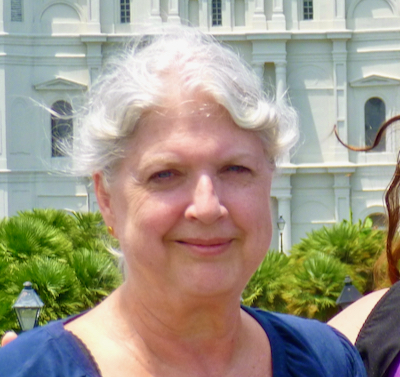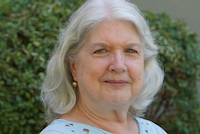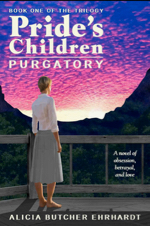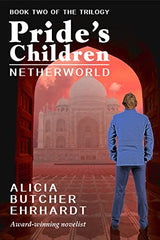I asked writer Alicia Butcher Ehrhardt to share with us her challenges of writing a trilogy—in the middle of writing that trilogy. As a writer dealing with a chronic illness, she has put into place many processes that help her keep her story and her writing on track.
It took you a long time to write your first book, “Purgatory.” Why did you decide to write a trilogy?
I knew the whole story in 2000: it came whole, vouchsafed to me as I like to say, because of the confluence of a large number of factors, including a question contained in the tiny prologue to Pride’s Children: NETHERWORLD, the second book in the trilogy, published this last September, 2022:
“When a commoner marries a royal, we ask ourselves: Why not me? How did she (it’s usually a she) land the prize?”
There are other, weightier questions involved:
- “What does the world expect from a disabled individual?”
- “When you can’t do what you trained to do, and love, what DO you do all day?”
- “What is a damaged person allowed to want?”
- “Is someone granted great professional success allowed personal happiness as well?”
- “Why is divorce so common among the elite – athletes, movie stars, politicians – especially when they marry each other? Wouldn’t they be best at understanding the pressures involved?”
And, to my mind, critically important:
- “How does this affect the children?”
A lot to pack in a single novel, though that was my original intention.
I realized I was writing a trilogy, not a series.
Pride’s Children is not a series, per se, but a trilogy – a story which takes three fat books to tell.
The characters are entwined from beginning to end, fighting for position, leverage, and happiness, and it is still, at the end, about the children.
But it turned out there were a very large number of intermediate steps to make this story credible, and its outcome – at least on the story’s own time-frame – satisfying, illuminating, and inevitable.
Those steps were critically dependent on who the individual characters are and become.
To write a trilogy, you turned to what you call “Extreme Plotting.” Explain that to us.
The only answer for me, someone with a damaged and limited mind, was to think through every choice, every path, every timeline, to make those decisions and lock them down, and then to STICK TO THEM. Which I will call Extreme Plotting.
The story broke beautifully into three major parts plus a conclusion/resolution/solution:
- Friendship/obsession,
- Commitment/betrayal,
- Love and Consequences.
Because of a ‘rule’ I discovered in Donald Maass’ wonderful book, The Fire in Fiction, which I’m twisting for my own purposes, as he proposed it for thrillers and other hard-to-believe creations is that:
“the more improbable your premise, the more words it will require to overcome reader’s skepticism,’ and get them to believe.”
So, while Pride’s Children was created and planned as a whole, a single story, it turned out it had such a long path to overcome that reader skepticism and be believed, that it could not be shoe-horned into a single volume unless that volume was very long.
And here I ran up against reality.

Why did you decide to self-publish your trilogy?
I had already decided that I would publish the story myself – as mentioned in my article here of Jan. 13, 2021 – because I didn’t think it would fall comfortably into a traditional publisher’s catalogue, which left me with my best self-publishing option: Amazon. And the limitation that print-on-demand (POD) books from their presses had a limit on the maximum number of pages.
For comparison, my mass market paperback copy of Gone With the Wind is 1468 pages. In a single binding. In very small, hard to read, type.
Another option would have been to streamline the story à la James Patterson, leaving out most of the detail by assuming readers could supply it from their own mental databases.
It wouldn’t work for Pride’s Children because readers do NOT have the database I would have to depend on to fill in. The same reason I thought a traditional publisher would not take it on.
Besides, I felt it would have been extremely unsatisfying not to let readers see the individual steps played out, and require even more suspension of disbelief than the basic premise.
To manage writing a trilogy, I turned to a different type of plotting.
I don’t know how other writers manage writing very long stories, and series, but for me the solution is a fractal kind of extreme plotting: at every level of the story, from individual paragraphs to the main three parts plus epilogue, I needed to keep the story on track, and every word and episode contributing to that inevitable ending.
Which also, paradoxically, makes it easier to write: If something is essential for the end, it stays; if it isn’t, it gets dumped from the beginning – I have no extra words for digressions or navel-gazing, because there isn’t space.
A reader will do well to note that and remember it: I don’t do fluff. I don’t have padding. I put that in there for probably more than one reason, and it’s essential to the story SOMEHOW. And a battle was fought over its inclusion. Extreme plotting. Three volumes for the same story. Because it is all one.
Tell us about the challenges you faced writing the second book in the trilogy.
At the end of PURGATORY, and for perfectly logical reasons, our three characters, friends of a a sort, are going their separate ways, with a vague commitment to seeing each other if they’re ever in the same town, with some possibilities that it might happen.
Everything else is window-dressing. It feels good, if slightly sad and bittersweet. If Pride’s Children were a Romance instead of a mainstream love story, this would be an acceptable ‘Happy for now’ (HFN) ending. Except I wrote TO BE CONTINUED.
Netherworld starts a couple of days after the end of Purgatory.
And everyone is scooped back into a crucible, but now the stakes are much higher.
The plot has taken that into account from the beginning, the second set of stepping-stones critical for getting across the story-river is known, and the challenge is to keep the story going, kick it up a big notch, and face writing and publishing another almost-self contained story with another HFN ending, happy enough in some way for reader satisfaction to this point, but with TO BE CONCLUDED (the main difference between series and trilogy) as its last line.
That is another ‘why’ for extreme plotting, and for someone with my brain: the middle story in a trilogy is no place to find you have no idea what’s happening next.
There are reasons the second book for any author may be subject to the dreaded ‘sophomore slump.’
Tell us how the dreaded sophomore slump affected you.
The obvious one, especially for a traditionally-published author hoping to capitalize on the success of a good debut, is that the debut novel is often written and re-written over whatever time it takes (often years, possibly including school, teachers, and writing mentors), and usually nowadays not supported by an advance of enough cash to be the primary income source for an unproven writer (thus the writer is cautious with money).
But the second comes with deadlines and supervision and editing by the publisher with requests for changes, because they want that book out there, exploiting the success of the first novel, as quickly as possible so readers don’t forget. The pressure can be intense. And paralyzing.
But when it’s ONE story, planned that way from the beginning, and the plot has been refined before the first book was being written, it’s easier to just load the next steps in, keep following the characters and seeing how they execute planned events, and continue the same process that got Book 1 to the finish line.
Purgatory took fifteen years (during which part of the task was to learn to write to the standards required by years of reading – something it turns out is NOT obvious). Netherworld was ready after seven.
The challenge is to continue everything you learned for writing the first book, only better. And to tackle the new events and situations that make the plot more exciting – and learn to write them well.
But the really hard one, knowing what to write next, didn’t apply.

How did you cope with these challenges so you could reach your goal of writing a second book in the trilogy?
Helpful techniques:
Stick to your guns – stay the course.
This is no different than if it had been a single continuous long book. Just write the next scene, the next chapter, in the list (I write linearly), being especially careful with first and last lines (which keep the reader engaged and turning the page far into the night, I hope), being very careful to keep continuity and not rely on memory for details.
When writing a trilogy, create a bible.
Any work you did for a series/trilogy ‘bible’ as you wrote the first book comes back to help; any you should have done but didn’t, will haunt you and take up a lot of time. Don’t skip this part – readers, because they have the luxury of swallowing the book in a short period of time, WILL find anything you remembered wrong.
When writing a trilogy, it helps to have a written ‘writing process.’
Everything you learned about how to motivate yourself, keep going, and stay focused during the writing of your first book should by now be in a file. I used that file to walk through the writing of each scene in a rough order, which meant there was far less floundering about: if I was uncertain, a quick review of where I was in the process of producing a finished scene usually resulted in an ‘Ah, right’ comment, and getting efficiently to the next task.
I edited that process file often when writing Purgatory, almost not at all for Netherworld. I’ll give it a quick review before the final volume, and get to work.
Use excellent storage and backups!
You will regret anything you lose due to skipping more than you know. Make it automatic – don’t rely on remembering this, either. When you work fast, there is more to remember.
Between volumes consider very carefully whether any of your software needs updating or replacing with something better. While writing is not the time, but you learn things and promise yourself you will update your writing environment based on them – this is the time.
I will switch to a new Macbook and Scrivener3 before getting solidly started in the final book, and will have the latest version of Pixelmator for my graphics.
How does your ME/CFS affect your ability to write a trilogy?
ME/CFS leaves me very little energy to function, and none to spare. I live with brain fog. If I handle a whole slew of real-world life activities (eating, resting frequently, micromanaging stress…), I get some time many days with the brain I had before, which, if I don’t squander it, allows me to THINK.
The worst part can be the unpredictability. I never know if I’ll be able to write today.
Having to do something else – a doctor visit, dinner with friends, an errand – usually means there won’t be energy for writing that day and the post-exertional effect might last days, so I live a very quiet life.
It seems as if I’m restricting myself, but the reality is that almost anything costs days of recovery – and after 33 years I have no excuse for not remembering that. I have to CHOOSE the slow but relentless accumulation of words over futzing about with the million distractions available – or I don’t get words.
2022 was particularly bad because of an ongoing problem I needed surgery for in September (and the interminable testing before to make sure I would survive it) – and the aftermath consumed over two months, was unexpectedly painful, and made me wonder if the brain fog would EVER recede.
What are the coping techniques you use to keep progressing on your trilogy while taking care of yourself?
The key to my success (two books published) has been to IDENTIFY the usable time when it occurs and USE that time for the writing.
I discovered years ago that I can MEASURE brain speed: a Hard sudoku will take me less than six minutes. I have disciplined myself to grab that time by blocking the internet immediately with a little program called Freedom, read the last piece in the current scene file or auxiliary scene files, and my last Journal entry (I talk to myself in the Journal, including commenting when I’m finished writing for the day, what I should do next when I get back – and every entry gets the Scrivener time/date stamp).
Think ‘put brain down with instructions what to do when next picking it up.’
Then, having essentially reloaded where I was, I just… keep going. I’m a linear writer who trusts her plotting: I write one scene at a time, edit and polish it, and rarely need to go back to it. I don’t do ‘drafts’ – can’t keep the whole in mind at once.
If I’m not writing the scene, I’m writing in the Journal why I’m not writing in the scene, and that helps me both figure it out – and remember for the next time the same thing happens. Because this pattern repeats on a continuous loop.
When writing a trilogy, it helps to remember I like writing.
It really helps that I LIKE writing, that I WANT to write. The whole messy ‘what do I say next’ is pleasurable and fulfilling. The technique for figuring out why I’m temporarily stuck – write in the Journal – always eventually works.
I say I don’t get writer’s block, but what I really mean is that as soon as I realize I’m stuck, I have a way to get unstuck which never fails. That is the technique for dealing with a chronic illness – that, and realizing what a privilege it is to write at all, to know the story I’ve been chosen to tell. And, because illness has made me highly distractible, I block the source of many of those distractions – until the timer is up, and the day’s writing is done.
While starting for the day, I periodically do a Hard sukoku – and as soon as it verifies that the brain is ‘ON’, begin the behavior chain by blocking the net and reading where I was. Because I know how fleeting that ability might be.
What advice would you give to other writers who want to write a trilogy?
Know what you’re writing. A trilogy and a series are different, in that the first has a planned end, and thus a planned structure, which, for mine, means tight coupling of all three books.
A series is loosely coupled, but each book is a standalone in the same universe with the same characters, and an overall time scheme which usually involves those characters aging in ‘story time.’ Series don’t need ends. There is always a next book possible.
Pride’s Children is a trilogy, planned as a unit, with an overarching theme and goal as well as individual ones for each of the books. If something is relevant to the story, it has a designated place in one of the books.
A trilogy has to be a big-enough story to need the space. Readers ‘feel’ the stages as they read, know a major change in the contract with the reader happens at the breaks. A trilogy kicks up tension with each book. The final resolution must be implicit in the beginning – but only when you get there.
A trilogy requires an end – and must be weighty enough to carry three books. And satisfy the build-up.
You’re now facing the third and final book in the trilogy. What challenges are coming up for you?
The main challenge is that everything that happens must contribute to a satisfying stand-alone volume – and also lead to the story end. Much of that significance was built into the trilogy at the plotting stage – the events themselves were created to move the premise from statement to testing to proof.
The challenges include being twenty-two years older than when I started writing – the physical challenges slowly creep up on you. And three computers and a house move cross-country have resulted in a few things still being in storage, somewhere, as well as large undigested files from two major computer crashes.
I have to remember what I meant by the chapter titles – twenty new chapters will be loaded into the writing software with all their notes. I must be especially vigilant to not develop plot holes – there will be nowhere to fix them! And this is my final chance to say anything about questions left from the previous 350K words.
But the most important part is whether a reader will find the final volume worth the wait, remember the parts they loved, and recommend the whole trilogy to their book club and friends.
What do you find helps you speed up the time it takes to write a book?
Part of the improvement in speed comes from having developed so many of the craft tools I needed: the first time I wrote a fight scene (in a bar), I had a lot to learn, never having been in one. The techniques are not obvious; the aim, the pace, the results, the reality – all have been written about, all can be learned, but I had to personalize them for MY characters.
Another speed improvement comes from learning to face fears – they tend to be repetitive, and can be handled with more calm each time they surface, and faster.
Many decisions about characters can’t be made until you get to the part of the story where they’re important – but most of those are over by this far into a story.
Even using my process sheet to guide the creation of each scene is much faster – practice.
I ‘go to the mattresses’ (i.e., use the right rescue technique) much faster now – I realize when I’m stuck or hobbled and why faster, so the solutions come more quickly, and I’ve probably used them before.
One of my favorites when nothing budges is to do what I call ‘atomizing’: making a list of the next steps where each entry is the simplest possible contributing step I can take, such as opening a particular file, or reading the previous scene. Steps small enough to accomplish even when the brain is almost unusable still result in forward progress.
I have literally taken a scene, printed it out, and cut each sentence into a separate scrap of paper, sorted them into piles, and rewritten from the clarity that results from having to decide which of two sentences should come first.
I know all my writing books; when necessary, I can hunt down where one tells me how to solve a particular problem in minutes. My writing software is an extension of my finger tips. I can take a mess of ‘things which belong in this scene’ and come up with something coherent in far less time than when I first faced such a pile.
I know how to keep track of research. When I need poetry to express an epigraph, I have experience finding – or creating – just the thing, because I won’t be inventing many new kinds of epigraphs at this stage. I even interpret ancient notes in notebooks and files more quickly – because I’m fitting them into that last, tight frame, now or never: something goes with what went before and where I’m taking the rest, or it doesn’t. The themes and timelines have only one way to go.
I even have a great mockup of the final cover in my brain – again, goes with the set.
But mostly, channeling the characters is a well-worn device, and many of the plot points and events are things I’ve set up and can’t wait to write: this is it. There is a real sense of excitement. Last chance.
* * *
 Alicia Butcher Ehrhardt is published traditionally in short story. She has devoted the past twenty-some years to learning to write to the standards of the early classics she was steeped in, as she believes that messages in fiction must be surrounded by the utmost in quality entertainment, and that fiction is the most powerful tool we have for slipping through the barriers we put up around our hearts and our minds.
Alicia Butcher Ehrhardt is published traditionally in short story. She has devoted the past twenty-some years to learning to write to the standards of the early classics she was steeped in, as she believes that messages in fiction must be surrounded by the utmost in quality entertainment, and that fiction is the most powerful tool we have for slipping through the barriers we put up around our hearts and our minds.
A voracious reader, she had always intended to write fiction, and, now retired, dedicates her whole life – when not spending time with her husband and family – to exploring the concepts of integrity in relationships, and the psychological questions of why people do what they do and make the choices they make, including their life partners.
For more about Alicia and her work, please see her website and Amazon author page.
 Pride’s Children: Purgatory: Reclusive ex-physician Kary Ashe transmutes personal tragedy into beloved best-selling novels. Actor Andrew O’Connell revels in the enviable status of leading man, with a reputation for perfectionism, an Irish temper, and broken hearts in his wake. Reigning Hollywood princess Bianca Doyle fears she’s already past her peak, and schemes to cement her position in the pantheon with Andrew as mate.
Pride’s Children: Purgatory: Reclusive ex-physician Kary Ashe transmutes personal tragedy into beloved best-selling novels. Actor Andrew O’Connell revels in the enviable status of leading man, with a reputation for perfectionism, an Irish temper, and broken hearts in his wake. Reigning Hollywood princess Bianca Doyle fears she’s already past her peak, and schemes to cement her position in the pantheon with Andrew as mate.
When Kary appears on a NY talk show to support a cherished cause, and becomes obsessed by fellow guest Andrew, movie star, she thinks she’s safe because she will never see him again. While Bianca, watching the show from far-off LA, is confident she can offer Andrew her own coveted insider rank.
But his next movie is filming near Kary’s Sanctuary, with Bianca as costar. Can Kary risk friendship with this intriguing man? Or will Bianca seduce him and meld her star to his? And will either ultimately satisfy Andrew’s twin lusts for fame and love?
Available on Amazon.
Pride’s Children: PURGATORY was awarded 2021 Best Contemporary novel by Indies Today whose reviewer Jennifer Jackson wrote the Editorial Review on PURGATORY’s Amazon page, and another for NETHERWORLD.
Try the 1500 word prequel short story TOO LATE.
 Netherworld: Book 2 of the Pride’s Children trilogy asks what are the risks—and obligations—of friendship?
Netherworld: Book 2 of the Pride’s Children trilogy asks what are the risks—and obligations—of friendship?
On Night Talk in New York City, host Dana Lewiston craves the inside scoop Andrew shouldn’t give her:
“YOU, SIR, ARE on top of the world.”
“I am.” Mind, eejit: no Kary, no Dodgson.
“Two days ago, you finished Incident at Bunker Hill…”
When his principles clash with his opportunities and his women, Andrew has no idea what it will cost him—live on national television, he may be about to find out.
The contemporary mainstream love story continues—with consequences.
Available on Amazon.


Many thanks, Colleen.
You had such interesting questions!
I should mention Too Late, a 1500 word short story prequel to the trilogy available on the books’ site – it gives you a starting point for some of the plot and one of the characters.
https://prideschildren.com/too-late-prequel/
Thanks, Alicia!